
Carlos Humberto Santana Barragán is an American guitarist, best known as a founding member of the rock band Santana. Born and raised in Mexico where he developed his musical background, he rose to fame in the late 1960s and early 1970s in the United States with Santana, which pioneered a fusion of rock and roll and Latin American jazz. Its sound featured his melodic, blues-based lines set against Latin American and African rhythms played on percussion instruments not generally heard in rock, such as timbales and congas. He experienced a resurgence of popularity and critical acclaim in the late 1990s.

Brothers in Arms is the fifth studio album by the British rock band Dire Straits, released on 13 May 1985 through Vertigo Records internationally and Warner Bros. Records in the United States. It is credited with being the first album in recorded history to sell over one million copies in CD format.
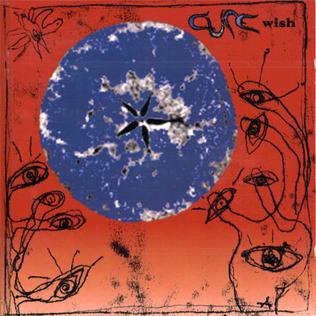
Wish is the ninth studio album by English rock band the Cure, released on 21 April 1992 by Fiction Records in the United Kingdom and Elektra Records in the United States. Wish was the most commercially successful album in the band's career, debuting at number one in the UK and number two in the US, where it sold more than 1.2 million copies.

Santana is the debut studio album by American Latin rock band Santana. It was released on August 22, 1969. Over half of the album's length is composed of instrumental music, recorded by what was originally a purely free-form jam band. At the suggestion of manager Bill Graham, the band took to writing more conventional songs for more impact, but managed to retain the essence of improvisation in the music.

Supernatural is the eighteenth studio album by American rock band Santana, released on June 15, 1999, on Arista Records. After Santana found themselves without a label in the mid-1990s, founding member and guitarist Carlos Santana began talks with Arista president Clive Davis, who had originally signed the group to Columbia Records in 1969. Santana and Davis worked with A&R man Pete Ganbarg, as Santana wanted to focus on pop and radio-friendly material. The album features collaborations with several contemporary guest artists, including Rob Thomas, Eric Clapton, Eagle-Eye Cherry, Lauryn Hill, Dave Matthews, Maná, and CeeLo Green.

Gregg Alan Rolie is an American keyboardist, singer and songwriter. Rolie served as lead singer of the bands Santana and Journey – both of which he co-founded. He also helmed rock group The Storm, performed in Ringo Starr & His All-Starr Band until 2021, and since 2001 with his Gregg Rolie Band. Rolie is a two-time inductee of the Rock and Roll Hall of Fame, having been inducted both as a member of Santana in 1998 and as a member of Journey in 2017.

Mobile Fidelity Sound Lab is a record label that specialized in the production of audiophile issues. The company produces reissued vinyl LP records, compact discs, and Super Audio CDs and other formats.

Abdul Mati Klarwein was a French painter of German origin best known for his works used on the covers of music albums.

CSN is the third studio album by Crosby, Stills & Nash, released on Atlantic Records on June 17, 1977. It is the group's second studio release in the trio configuration. It peaked at No. 2 on the Billboard Top Pop Albums chart; two singles taken from the album, Nash's "Just a Song Before I Go" and Stills' "Fair Game" charted on the Billboard Hot 100. It is currently the trio configuration's best selling record, outselling 1969's Crosby, Stills & Nash by 200,000 copies. It has been certified quadruple platinum by RIAA.

Santana is the third studio album by the American rock band Santana. The band's second self-titled album, it is often referred to as III or Santana III to distinguish it from the band's 1969 debut album. The album was also known as Man with an Outstretched Hand, after its album cover image. It was the third and last album by the Woodstock-era lineup, until their reunion on Santana IV in 2016. It was also considered by many to be the band's peak commercially and musically, as subsequent releases aimed towards more experimental jazz fusion and Latin music. The album also marked the addition of 16-year-old guitarist Neal Schon to the group.

Caravanserai is the fourth studio album by American rock band Santana, released on October 11, 1972. The album marked a period of transition for Santana as it was the band's last to feature several key early members, while shifting in a more instrumental, progressive jazz fusion direction. It sold in fewer quantities than the band's previous chart-topping albums, stalling at No. 8 on the Billboard LPs chart, but has been critically acclaimed.
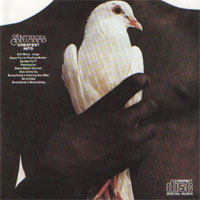
Santana's Greatest Hits is a 1974 compilation album by Santana. It offers highlights from the group's first three albums. It is the band's best-selling compilation album, selling over 7 million copies in the U.S.
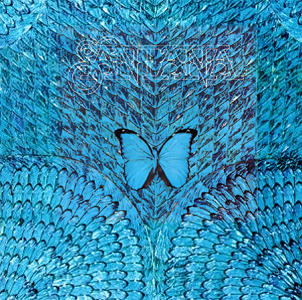
Borboletta is the sixth studio album by the American Latin rock band Santana. It is one of their jazz-funk-fusion oriented albums, along with Caravanserai (1972), and Welcome (1973). Non-band albums by Carlos Santana in this style also include Love Devotion Surrender (1973) with John McLaughlin and Illuminations (1974) with Alice Coltrane, Jack DeJohnette and Jules Broussard. The guitarist leaves much room to percussion, saxophone and keyboards to set moods, as well as lengthy solos by himself and vocals. The record was released in a metallic blue sleeve displaying a butterfly, an allusion to the album Butterfly Dreams (1973) by Brazilian musician Flora Purim and her husband Airto Moreira, whose contributions deeply influenced the sound of Borboletta. In Portuguese, borboleta means "butterfly".
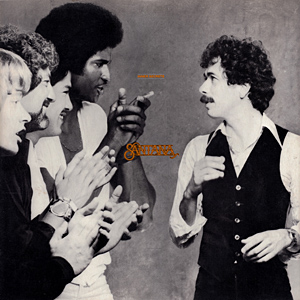
Inner Secrets is the tenth studio album by Santana. It was released in 1978 and, unlike the fusion of Latin, jazz, rock, blues and spirituality that characterized previous records, it was considered an album-oriented rock album.

Freedom is the fifteenth studio album by Santana. By this recording, Santana had nine members, some of whom had returned after being with the band in previous versions. Freedom moved away from the more poppy sound of the previous album, Beyond Appearances and back to the band's original Latin rock. It failed, however, to revive Santana's commercial fortunes, reaching only ninety-five on the album chart.

Santana is an American rock band formed in San Francisco in 1966 by Mexican-born guitarist Carlos Santana. The band has undergone various recording and performing line-ups in its history, with Santana being the only consistent member. After signing with Columbia Records, the band's appearance at the Woodstock Festival in 1969 increased their profile, and they went on to record the commercially successful and critically-acclaimed albums Santana (1969), Abraxas (1970), and Santana III (1971). These were recorded by the group's "classic" line-up, featuring Gregg Rolie, Michael Carabello, Michael Shrieve, David Brown, and José "Chepito" Areas. Hit songs of this period include "Evil Ways", "Black Magic Woman", "Oye Como Va", and the instrumental "Samba Pa Ti".
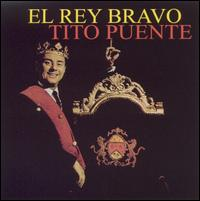
"Oye Cómo Va" is a 1962 cha-cha-chá by Tito Puente, originally released on El Rey Bravo. The song achieved worldwide popularity in 1970, when it was recorded by American rock group Santana for their album Abraxas. This version was released as a single in 1971, reaching number 13 on the Billboard Hot 100, number 11 on the Billboard Easy Listening survey, and number 32 on the R&B chart. The block chord ostinato pattern that repeats throughout the song was most likely borrowed by Puente from Cachao's 1957 mambo "Chanchullo", which was recorded by Puente in 1959.
"Samba pa ti" is an instrumental by Latin rock band Santana, from their 1970 album, Abraxas. In English, the title means "Samba for You." It was released as a single in 1973. The song charted at No. 11 in the Netherlands, No. 43 on the German charts, and No. 27 on the UK Singles Chart, Santana's first single to chart in the United Kingdom.

The discography of the rock band Santana formed by the Mexican-American rock guitarist Carlos Santana consists of 26 studio albums, 8 live albums, 61 singles, and 23 compilation albums.
"Incident at Neshabur" is the fourth track from the 1970 Santana album Abraxas. Co-written by pianist Alberto Gianquinto and Carlos Santana, the instrumental has several jazz-inspired rhythm and time signature changes.


















